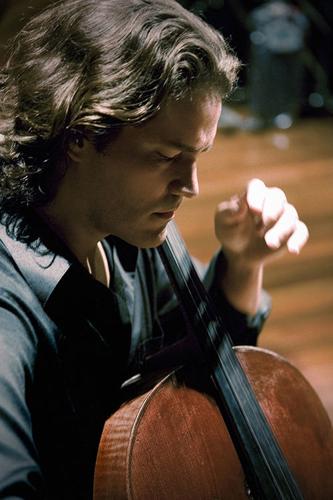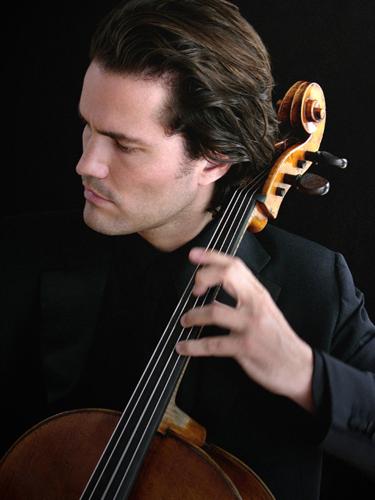Zuill Bailey’s concert with St. Andrew’s Bach Society on Sunday, Aug. 12, will go something like this:
An element of evolution when he plays Bach’s Cello Suites 1, 2 and 3 in the first half, followed by the Bach-influenced Variations on a Paganini theme by Gregor Piatigorsky, which he predicts will throw the concert “into the ditch and all out in the yard.”
“It shoots into the stars, into the stratosphere like Cirque du Soleil,” the Grammy-winning cellist predicted in a phone call from home in El Paso last week.
Bach is Bailey’s jam, has been for most of his professional career. He played Bach’s Cello Suites as a kid growing up in Virginia and spent eight years practicing them in the early 2000s before recording them in 2010. The album was more successful than he could have imagined, topping the classical music charts when it was released. Critical acclaim included Classical Candor calling it “probably the best-sounding recording of the works currently available” and Gramophone magazine praising Bailey’s “virtuoso technique, strong, richly expressive tone and a bold, individual manner of playing (that) all result in memorable performances.”
“My journey with Bach was for me and for my own personal journey, and it turned into some beautiful treasure on the other side of it,” Bailey, 46, said. “I am connected to Bach.”
His concert Sunday will be his first in Tucson since he played a recital with the Arizona Friends of Chamber Music a dozen years ago. But Bailey is no stranger to Arizona; for the past five years, he has curated the Mesa Arts Center’s Classical Music Inside Out program, a series of intimate concerts that breaks down barriers between the artist and audience. The series was inspired by a recital Bailey gave at the MAC in 2013 of the complete Bach Cello Suites.
“Obviously to listen to the (full) Bach Cello Suites is an epic adventure in itself,” Bailey said, which is why he spent time talking the Mesa audience through each work.
Audience members were so impressed that they urged the MAC to incorporate that style of concert into its programming.
“It kind of lit a fire for the center and the community for presenting music in a close and personal way,” Bailey said.
It’s the template Bailey uses for his recitals, including on Sunday. And it’s one that works particularly well for Bach, whose suites don’t come with instructions on everything from tempo to bowing articulations.
“Basically when you play Beethoven, you play Shostakovich, you play Haydn, it will tell you exactly how fast to go. It shows you the phrasing. It shows you the bowing, all the articulations the composer wanted,” he explained. “It will tell you how loud or how soft. … And you go with that and you channel that. With the Bach Cello Suites, his manuscripts are lost. There are no markings and there are no directions.”
During Bach’s lifetime, there were just four sources that sketched how cellists performed the suites, “and they are all so very different,” Bailey said.
“The closest thing we have to his writing, from my standpoint, is his second wife Anna Magdalena. That’s the source that I use, which still has very little to any markings in it,” he said. “So it’s basically the cellistic bible, the Bach Suites, because they can be interpreted in any way. No way is correct or wrong. And this is the scary part or the humbling part. It magnifies where you are in any given moment of your lifetime. You are free to be; you are not shackled by these markings. You’re not in a box trying to do exactly what someone wanted and if you don’t you’re not being respectful.”
Which is why the Bach Suites become a very personal journey for the musician, and the audience, as well.
“They bring out all the things that remind us we are human, from having hope to despair, to being humble to being excited,” said Bailey, who also splits his time as artistic director of the El Paso Pro Musica, Alaska’s Sitka Summer Music Festival and the Northwest Bach Festival in Spokane, Washington, in addition to teaching cello at the University of Texas El Paso. “ When I play them, those feelings that I feel are in different spots each time. They are not in the same spot because I am in a different place when I play them. You kind of walk into the unknown every time you play Bach in public.”
Bailey performs on a 1693 Matteo Goffriller cello that was built eight years after Bach was born.
“To hear Bach on this cello is exceptional because it has the wide range of the pipe organ,” he said. “Smaller cellos you can send the sound out rather quickly. But with this one you have to sink in. It’s really the perfect muse as well as guide to making music because it allows me to dream freely. I can do whatever I want on this cello, and it keeps asking me if I want more.”





